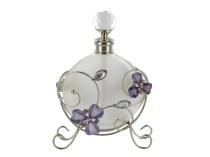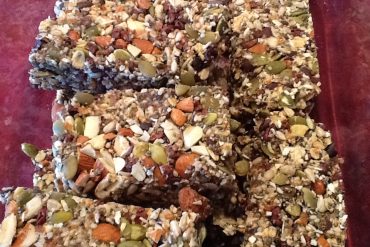As summer weather approaches, so does the increase of bugs, mosquitoes and mosquito bites. No one likes to be a meal for a mosquito or tic, so many people turn to traditional commercial insect repellents which use DEET as an active ingredient. While these products are effective at keeping insects from biting, you have to wonder why. What is in Deet that is so bad, that even mosquitoes avoid it?
Deet, The Common Ingredient in Insect Repellents and Some Sunscreens
DEET is N,N-Diethyl-m-toluamide or N,N-Diethyl-3-methylbenzamide.
Many people don’t realize that Deet is a pesticide. It is applied directly to skin and clothing to repel mosquitoes and other insects. Some people have experienced irritation or an allergic reaction to DEET-containing products. DEET is toxic and potentially fatal if swallowed. DEET should not be applied to areas with cuts or sores or around the eyes, since permanent eye damage can result from contact. High doses or long-term exposure to DEET have been associated with neurological damage. DEET can damage some plastics and synthetic fabrics, such as nylon and acetate, which means it can damage clothing or camping equipment.
The Journal of Pesticide Reform States the Following:
Symptoms of DEET poisoning in exposed people include vomiting, rashes, drowsiness, headache, and seizures.
Children appear to be particularly susceptible, and some pediatricians recommend that DEET not be used on children.
In both laboratory animals and human cells, DEET has damaged DNA, the genetic material in living cells.
DEET can cross the placenta and move from a mother to her unborn child. When pregnant laboratory animals are exposed to DEET, the exposure has caused fetal loss and abnormal skeletons in the offspring.
Male laboratory animals exposed to DEET produced abnormal sperm.
Exposure to DEET in amounts equivalent to what people typically apply to their skin has affected the behavior and nervous system of laboratory animals. Effects include reduced sensory and motor skills, a reduction in the ability of the blood-brain barrier to pass molecules through to the brain, changes in the activity of an enzyme that helps transmit nerve impulses, and death of nerve cells in the brain.
DEET has synergistic interactions with common insecticides, including permethrin and malathion.
The combination of DEET and fenvalerate is synergistically toxic to pets.
DEET frequently contaminates streams.
Exposure of developing chicks to DEET caused birth defects.
MSDS Information
Section 3 of the MSDS lists the following information:
Appearance: colorless liquid.
Caution! Causes eye and skin irritation. May be harmful if swallowed. May cause respiratory and digestive tract irritation. This substance has caused adverse reproductive and fetal effects in animals. May cause central nervous system effects. Possible sensitizer.
Target Organs: Central nervous system, eyes, skin.
Potential Health Effects
Eye: Causes eye irritation.
Skin: Causes skin irritation. May cause skin sensitization, an allergic reaction, which becomes evident upon re-exposure to this material.
Ingestion: May cause gastrointestinal irritation with nausea, vomiting and diarrhea. May be harmful if swallowed. May cause central nervous system effects.
Inhalation: May cause respiratory tract irritation. May cause irritation of the mucous membranes.
Chronic: Prolonged or repeated exposure may cause adverse reproductive effects. Laboratory experiments have resulted in mutagenic effects. Chronic overexposure may produce erythremia, bullous eruptions, contact urticaria, muscle cramping, slurred speech, tremors, seizures, or coma.
Reduce Exposure to Mosquitoes
Remove any objects in your yard with standing water.
Peak hours for mosquitoes are dawn and dusk. If you can, avoid the outdoors during these times.
Avoid using scented products, such as perfumes, dryer sheets, fabric softeners which contain perfumes, as well as scented lotions and creams.
Make Your Own Mosquito Repellent
Making your own mosquito repellent is very easy and eliminates your exposure to toxins. It’s important to find an oil or alcohol that works for you and is safe for your skin. Simply mix the essential oil with a carrier oil or alcohol. You can add to a spray bottle or simply rub on your skin or clothing. Re-apply every couple of hours or after swimming or exercising. Store your bottle in a cool dark area, away from sun and heat.
Please keep mind that just because something is natural doesn’t mean its safe. Many people have allergic reactions to essential oils. Be sure that your essential oil is the real thing and not synthetic.
Mosquito Repellent Recipe:
10-25 drops of essential oil
2 Tablespoons of carrier oil or alcohol
Place ingredients in a jar, cover tightly and shake to mix. Label and be sure to keep out of reach of children.
More Mosquito repellent recipes
Essential oils that work well against mosquitoes are:
catnip oil
castor oil
cedar oil
cinnamon oil
citronella oil
clove oil
eucalyptus oil
geranium oil
lemon eucalyptus oil
peppermint oil
rosemary oil
tea tree oil
Carrier oils and alcohol options:
olive oil
sesame oil
sunflower oil
vodka
witch hazel
Resources:
http://chemistry.about.com/cs/howthingswork/a/aa042703a.htm how deet works
http://fscimage.fishersci.com/msds/88715.htm MSDS
http://www.ncbi.nlm.nih.gov/pubmed/21328177
http://www.ncbi.nlm.nih.gov/pubmed/19712151
http://www.ncbi.nlm.nih.gov/pubmed/19009361
http://www.ncbi.nlm.nih.gov/pubmed/3525852 DEET absorbs through the skin following topical application and may have significant toxicity.
http://www.ncbi.nlm.nih.gov/pubmed/20959613 Oxybenzone and DEET enhance the skin permeation of each other and accumulate in blood, liver and brain after repeated topical application.
http://www.ncbi.nlm.nih.gov/pubmed/19141786 DEET has an immunosuppressive on humroal immunological function in mice.
http://www.pesticide.org/get-the-facts/pesticide-factsheets/factsheets/deet Deet is a pesticide








